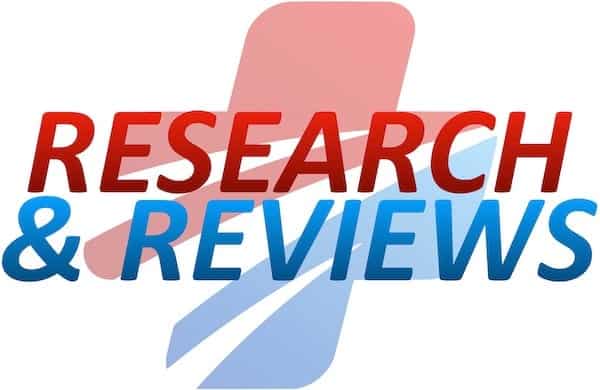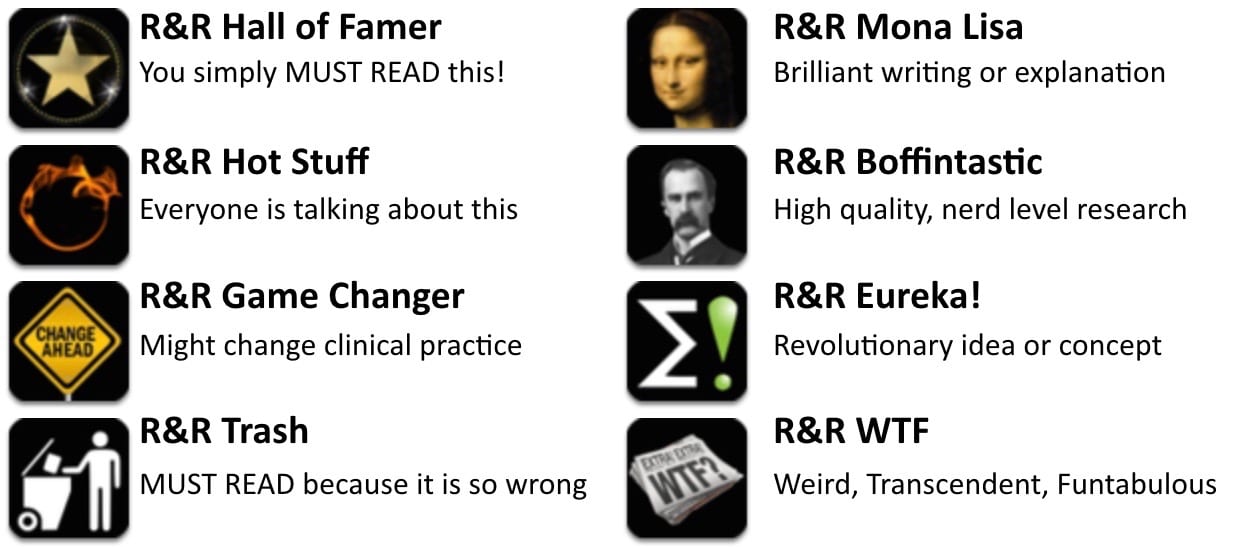R&R In The FASTLANE 078
Welcome to the 78th edition of Research and Reviews in the Fastlane. R&R in the Fastlane is a free resource that harnesses the power of social media to allow some of the best and brightest emergency medicine and critical care clinicians from all over the world tell us what they think is worth reading from the published literature.
This edition contains 7 recommended reads. The R&R Editorial Team includes Jeremy Fried, Nudrat Rashid, Soren Rudolph, Anand Swaminathan and, of course, Chris Nickson. Find more R&R in the Fastlane reviews in the : Overview; Archives and Contributors
This Edition’s R&R Hall of Famer
Gruber E, et al. Basic life support trained nurses ventilate more efficiently with laryngeal mask supreme than with facemask or laryngeal tube suction-disposable–a prospective, randomized clinical trial. Resuscitation 2014;85(4):499-502. PMID: 24440666.
- This operating theater study randomized nurses to bag mask ventilation, laryngeal tube, and LMA. Ventilation was better with the LMA than with the laryngeal tube, both were greatly superior to bag mask ventilation. This result is concordant with most of the literature on this topic. LMA ventilation is both easier to perform and more effective than bag mask ventilation, especially in providers who do not perform bag mask ventilation frequently (e.g. most emergency providers). If you’re going to use bag mask ventilation, use optimal technique, but even better in my view is to skip BMV and use LMA ventilation straightaway.
- Recommended by: Reuben Strayer
- Read More: EMCrit Podcast 65 – A Primer on BVM Ventilation (Reuben Strayer)
Pereda MA et al. Lung Ultrasound for the Diagnosis of Pneumonia in Children: A Meta-analysis. Pediatrics 2015. PMID: 25780071
- Lung US has pretty impressive test characteristics for the diagnosis of Pads pneumonia.
Here is the latest metanalysis to show it works. - Recommended by: Casey Parker
Dres M, et al. Passive leg raising performed before a spontaneous breathing trial predicts weaning-induced cardiac dysfunction. Intensive Care Med. 2015;41(3):487-94. PMID: 25617264
- Failed extubation rate unacceptably high? Are you thinking about weaning-induced cardiac dysfunction before yanking the tube? If not, perform a passive leg raise to check for preload independence and see if your patient is truly ready to be liberated from their vent.
- Recommended by: John Greenwood
Othong R, et al. Medical toxicologists’ practice patterns regarding drug-induced QT prolongation in overdose patients: A survey in the United States of America, Europe, and Asia Pacific region. Clin Toxicol 2015;53(4): 204-9. PMID: 25706450
- This survey of medical toxicologist on the management of drug induced prolonged QT had an abysmal response rate but highlights the tremendous variability in practice. The authors call for more research but highlight the following pearls:
-QTc is probably prolonged at 500 ms, but most say 450ms in men, 460 ms in women.
-Remove the responsible agent
-Magnesium doesn’t shorten the QTc and is typically only recommended after an episode of torsades
-K+ may be kept at the high end of normal after torsades in drug induced long QT - Recommended by: Lauren Westafer
Shif Y, et al. What CPR means to surrogate decision makers of ICU patients. Resuscitation 2015; 90: 73-8. PMID: 25711518.
- A depressing paper, or one demonstrating an opportunity, depending on your point of view. These authors looked at patients’ surrogates in the ICU and asked questions to ascertain their knowledge surrounding CPR. While we know non medical people’s understanding of the reality of what we do at the end of life is limited, the fact that the majority (72%) of respondents believed survival after CPR was >75% is still shocking. While this was a small, exploratory study, it does build on previous knowledge of the topic, and perhaps might assist those of us who are discussing these issues with families in the clinical settting.
- Recommended by: Jeremy Fried
Fralick M, et al. Co-trimoxazole and Sudden Death in Patients Receiving Inhibitors of Renin-Angiotensin System. BMJ 2014. PMID: 25359996
- This huge retrospective database review of 1.6 million patients in Ontario, Canada sought to determine whether patients taking Co-trimoxazole (Septra or Bactrim) and ACE inhibitors or ARBs together were at an increased risk for sudden death. Relative to amoxicillin, Co-trimoxazole was associated with an increased risk of sudden death (OR=1.38). The postulated mechanism was unrecognized severe hyperkalemia. Although this was a retrospective study, it may be prudent to avoid the use of Co-trimoxazole in patients on ACEI or ARBs. If Co-trimoxazole is the only antibiotic choice in a particular clinical situation, check the patient’s serum potassium before writing a script.
- Recommended by: Anton Helman
Alper BS, et al. Thrombolysis in acute ischaemic stroke: time for a rethink? BMJ 2015 PMID: 25786912
- The utility of tPA in acute ischemic stroke has been widely questioned by EBM experts, particularly in the Emergency Medicine field. This BMJ article is an excellent critique of the “evidence” behind the 3 – 4.5 hour window recommendations for the use of the drug for this indication.
- Recommended by: Anand Swaminathan
New Jersey Emergency Physician with academic focus on resident education and critical care in the ED. Strong supporter of FOAMed and its role in cutting down knowledge translation | @EMSwami |





